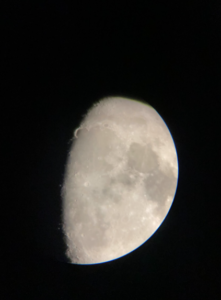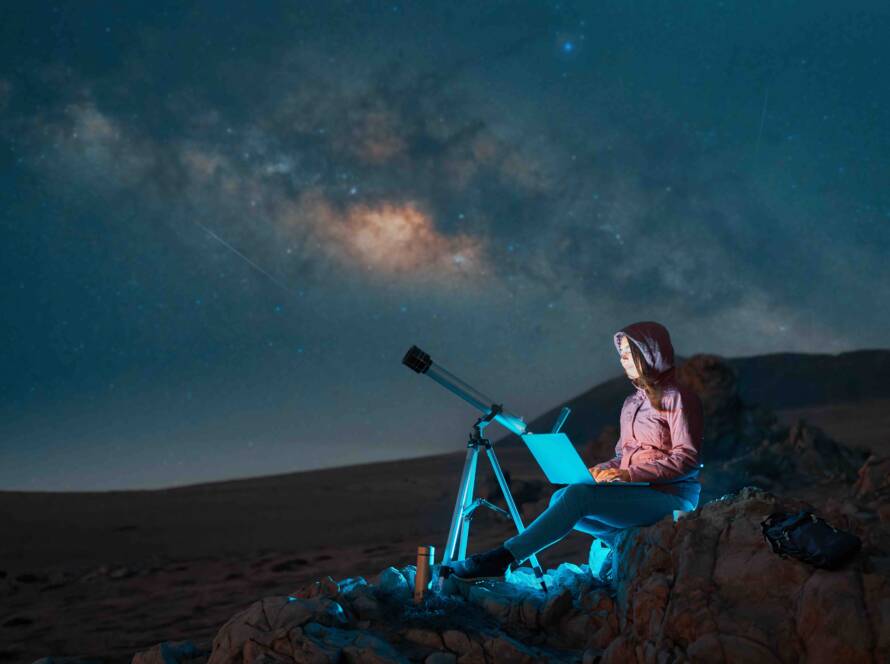By Francesca Warren

I have always wanted to study the moon, stars and other planets up close, so when my parents got me a telescope, I was super excited to use it!
The model I got is the Celestron AstroMaster 70, and it’s easier to use than it looks! After I assembled the telescope using the instructions provided, I needed to set up the red-dot finderscope. This helps me pinpoint objects in the sky with accuracy. To set up the finderscope, I had to go outside during the day and point my telescope at a far-away object like a street light, a tree or anything that I thought was easy to pinpoint. After I picked an object, I turned on my finderscope and adjusted it until the red dot was in the center of my targeted object. You can make sure the red dot is lined with the eyepiece by looking back and forth and adjusting the finderscope if needed. You do not have to keep doing this step every time you use the telescope. After I set up my finderscope, I waited until night time and pointed my telescope at the moon or any star or planet I wanted to observe.
 Using my telescope, I have seen the moon and many stars up close. I have seen stars that are very bright and some that are not as bright. To look at the stars up close, I use the 20x eyepiece. To look at the moon and other planets, I use the 10x eyepiece because the image will appear closer that the 20x.
Using my telescope, I have seen the moon and many stars up close. I have seen stars that are very bright and some that are not as bright. To look at the stars up close, I use the 20x eyepiece. To look at the moon and other planets, I use the 10x eyepiece because the image will appear closer that the 20x.
I was also able to get some decent pictures of the moon by putting my phone lens up against the eyepiece of the telescope. Since my phone has three camera lenses, snapping a picture of the moon with a telescope required a lot of patience.
The only problem I had while stargazing was the light pollution coming from the pot lights and lanterns in my backyard. I was not able to see the moon and the stars as clearly as I would have liked to. However, I did find special filters online that block out light pollution and add more detail to the moon and planets when you are observing them through your telescope. I have not got them yet, but I am really excited to test them out when I do get them.
I know there are specific times and dates where we can see certain planets with a telescope. According to Earthsky.org, Mars can be easily seen during September of 2024 when the day and nights are about equal length. I would also like to observe the different types of moons, like a blood moon, which is happening on March 13-14, 2025. I would also like to see a blue moon, which is happening sometime in 2026. I would also like to see a nebula at least once while using my telescope.
I think seeing objects in space from Earth is a very fascinating experience. This is because you are looking from up close, but from very far away. I really like my telescope because it is simple to use and you can learn a lot just by observing something. I really hope my telescope will help me with my astronomy career in the future and help me expand my knowledge of space.
About the Writer

Francesca is a team member at Youth Culture Inc. who has an interest in Advanced Manufacturing and Innovation. She also has an aspiration for Chemistry and Space Exploration and would like to pursue it as a career in the future.

